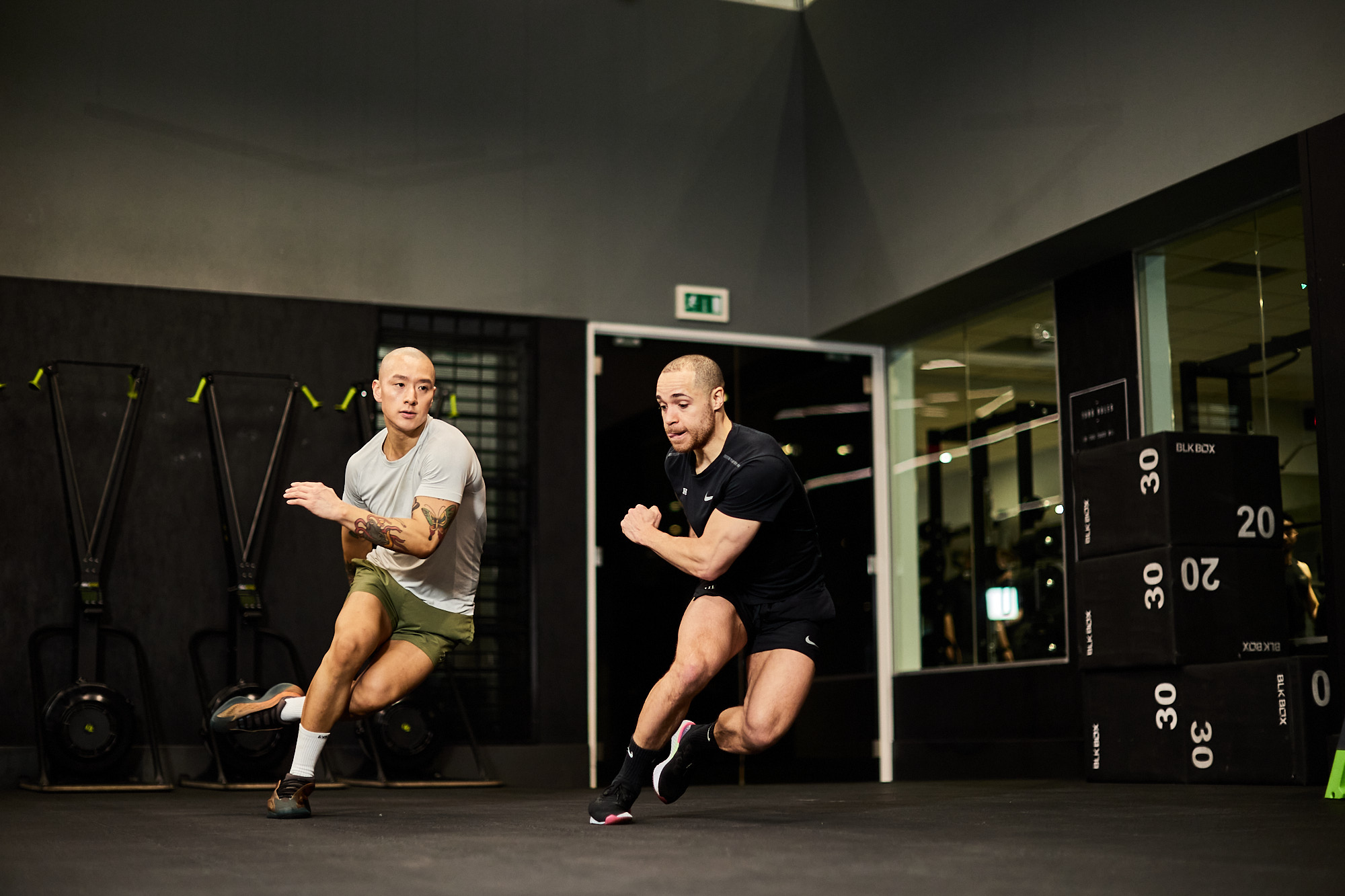There’s more to a well-rounded training routine than just balancing the ratio of chest days to leg days and sweaty classes to no-holds-barred solo sessions. In fact, you could be missing the crucial piece in your fitness puzzle altogether: strengthening your ankles. Working on your ankle mobility isn’t just beneficial to runners, as regular lifters, cyclists and group exercise veterans will all feel the benefit of loosening up your lower limbs.
“The ankle and foot is a complex structure, it has to be both malleable and rigid, to deal with the stressors placed on it both in life and in the gym, which means It is important that is had adequate mobility and strength,” says Third Space trainer Sasha Barr. “These exercises start with capturing the range of motions needed to lay a foundation of strength upon, then the preceding exercises help with strengthening the ankle joint with more force, and then higher velocities.” Here, Barr takes you through five exercises that will build stronger, more mobile ankles. That you’ll feel the benefit within weeks is just an added bonus.
Ankle Dowel Mobility:
How:
1) Start in a narrow half kneeling position with your right foot forward and with a dowel in front of your 4th toe.
2) While staying tall, take your right knee outside of the dowel and drive it forward. The heel of the front foot should maintain in contact with the floor.
3) Find the end range of motion and cycle through a breath.
4) Return to your starting position and repeat on the other side of the dowel.
Why:
“This exercise promotes mobility of the ankle joint, biasing dorsiflexion (front of shin bone gets closer to top of foot). This joint action is important for daily tasks, such as walking or descending stairs, as well as many gym exercises, such as squats and lunges,” says Barr. “The dowel helps with the stability, which allows you to concentrate on working the joint through its range of motion, rather then focusing too much on maintaining your balance.”
Ankle PAILS and RAILS
How:
1) Start in a kneeling lunge position, with your back knee resting on the ground.
2) Lean into your front foot using the weight of your torso to stretch your achilles and calf.
3) While keeping the heel on the ground, maintain a flat foot, push the ball of your foot into the ground to stimulate a contraction through the calf.
4) While relaxing the calf, try to lift your toes off the ground contracting the dorsi flexors.
5) Relax all muscles and your ankle range should be increased.
Why: “This is very similar to the Ankle Dowel Mobility exercise, but this time we are supporting our own body weight, which will increase the need for our stabilising muscle to hold us in position,” says Barr. “Once we bring the ankle joint into it’s end of range (dorsiflexion), we hold in this position, then slowly push the front of the foot down into the ground. By pushing the foot into the ground we contract the calf muscles in the back of the lower leg, this will allow greater range of motion at the ankle joint once we relax the muscles again.”
Pogo Jump
How:
1) Stand tall with your feet shoulder width apart.
2) Raise your heels so you are standing on the balls of your feet.
3) Quickly bounce up and down on the balls of your feet. Don’t let your heels touch the ground. Focus on minimal ground contact time and only minimal knee flexion.
Why: “The foot and ankle have to withstand a lot of force, predominately external force coming from the ground up. These forces become greater when we increase load or increase the speed of movement, such as in running or jumping. This means the ankle-foot complex needs to be both the malleable to except force, it also needs to be rigid in order to produce work from the force it has excepted,” says Barr. “Pogo jumps are a great exercise to condition the foot to withstand a lot of force in a short period of time. By performing the pogo with a focus predominantly pushing the foot in the ground and not bending from the hip and knees, this will help strengthen the tissue around the ankle joint.”
Standing Calf Raise
How:
- Put a weight plate on the floor and rest your toes on it whilst sitting on a bench.
- Place a dumbbell on your knee, your right hand holding the handle while your left hand holds the top.
- Lift up your toes as high as possible. Pause, then lower it back onto the weight and repeat.
Why:
“Standing Calf Raises are a great bang for your buck exercise, they hit most of the posterior (back) compartment of you lower limb,” says Barr. “They can be done on flat ground or done with the heels floating off the end of a box to work the muscles through a lengthened position. External Load can be added to increase the demand on the muscles, which will increase their size and strength.”
Seated Calf Raise
How:
- Sat at the seated calf raise machine, place the balls of your feet on the platform with your toes pointed forward – your heels will naturally hang off.
- Position your thighs under the pad and rest your hands on top.
- Lower the heels until the calves are fully stretched.
- Extend the ankles and flex the calves. That’s one.
Why:
“The actions of seated calf raise are similar to the standing version, the difference is the knee joint is bent at 90 degrees which helps to bias strengthening of the soleus muscle, a deeper superficial muscle in the calf complex,” says Barr. “This muscle is a prime gravity fighter when standing, used to propel us forward in walking , and is a high force producer when performing more athletic movements.”










